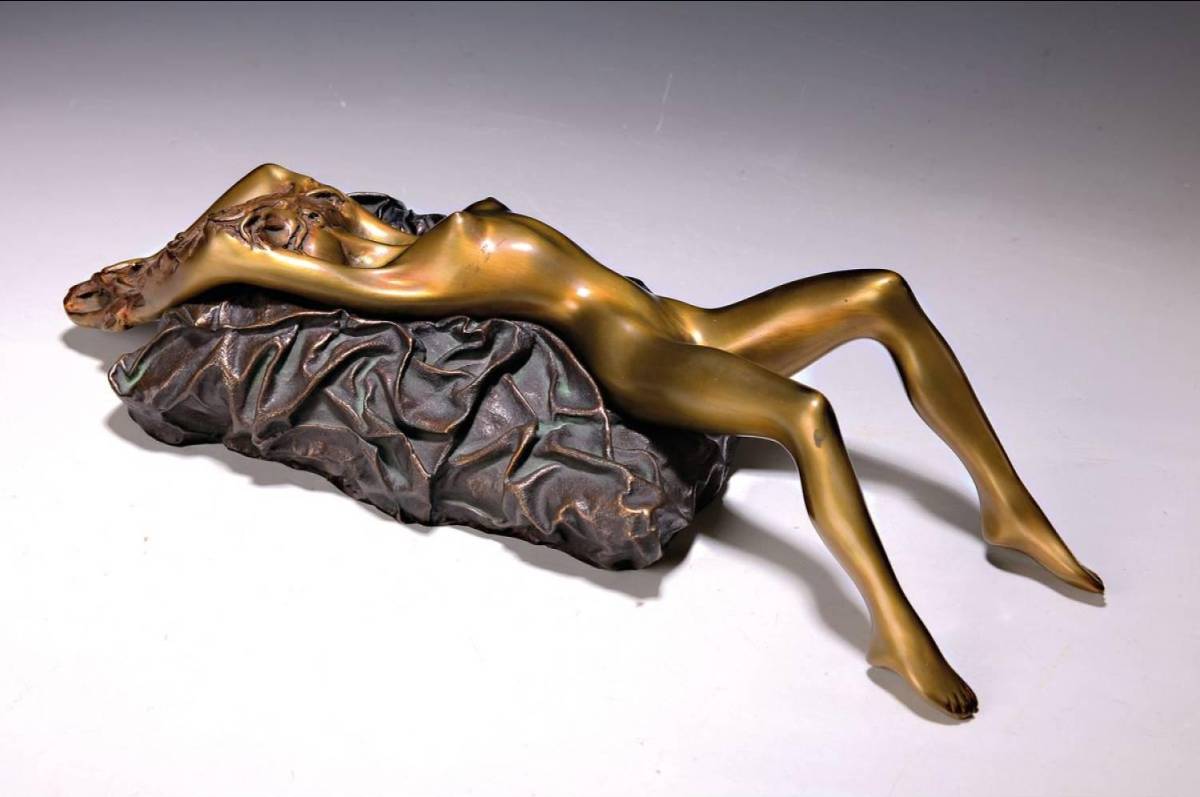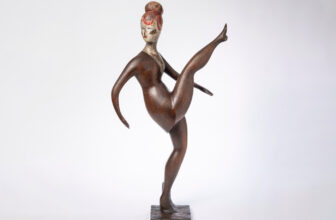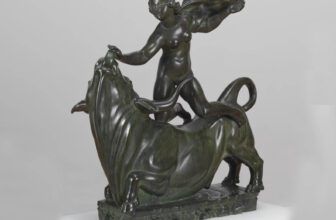
Bruno Bruni’s Famous Sculptures
Bruno Bruni is an Italian-born, German-based artist whose career has spanned painting, printmaking, and sculpture. Known for his sensual, lyrical forms and his devotion to the beauty of the human body, Bruni has developed a reputation as one of Europe’s most collected contemporary artists. While he is perhaps most recognized for his lithographs and drawings, his sculptural work represents some of his most enduring contributions to modern figurative art.
This story explores Bruno Bruni’s sculptures in detail , his most famous works, the techniques he employed, the themes he explored, their market value, and where his pieces can be found today.
Who Is Bruno Bruni?
Born on November 22, 1935, in Gradara, Italy, Bruno Bruni grew up during a period of social upheaval in post-war Italy. In the late 1950s, he studied at the Istituto d’Arte di Pesaro before moving to London and later settling in Hamburg, Germany, where he studied at the Hochschule für Bildende Künste.
By the 1970s, Bruni had become widely recognized for his lithographs, which blended classical techniques with sensuous, modern aesthetics. His works were influenced by movements like Art Nouveau, Surrealism, and Italian Renaissance art, yet they retained a deeply personal character.
Sculpture became an important extension of his artistic practice in later years, allowing him to translate the sensuality of his two-dimensional works into three-dimensional forms.
What Is Bruno Bruni Known For?
Bruno Bruni is primarily known for three artistic pursuits:
Lithography and Prints – He is considered one of the most significant modern masters of lithography, often praised for his technical precision.
Erotic and Sensual Themes – His art frequently portrays women, lovers, and dreamlike figures, rendered with tenderness and elegance rather than overt provocation.
Sculptures and Bronze Figures – His sculptural works echo the same sensuality as his drawings, often focusing on the female form in graceful, fluid poses.
While his prints and paintings brought him international fame, his sculptures established him as a versatile artist capable of moving between mediums with mastery.
The Style and Themes of Bruno Bruni’s Sculptures
Bruni’s sculptures often depict women in reclining, dancing, or stretching poses , embodiments of beauty, passion, and fragility. His figures are usually smooth, rounded, and soft, reflecting his dedication to harmony and sensuality rather than abstraction or distortion.
Key themes in his sculptures include:
Femininity – Many of his sculptures celebrate the female form, exploring both eroticism and vulnerability.
Romanticism – Love, desire, and intimacy are recurring motifs.
Mythological Inspiration – Some works hint at mythological or allegorical figures, blending realism with fantasy.
Human Fragility – His figures often strike delicate poses that seem caught in a fleeting moment, emphasizing the ephemerality of beauty.
Bruno Bruni’s Most Famous Sculptures
While Bruni has produced many bronze and ceramic sculptures over his long career, several have become particularly well known among collectors and art enthusiasts:
“Donna Sdraiata” (Reclining Woman)
One of his signature works, depicting a reclining nude woman with elegant, elongated lines. It embodies Bruni’s lifelong fascination with sensual repose and feminine grace.
“Ballerina”
A bronze sculpture capturing a ballerina mid-pose, celebrating both strength and delicacy. This piece reflects Bruni’s interest in dance and the expressive potential of the human body.
“Venere” (Venus)
Inspired by classical depictions of Venus, Bruni reinterprets the goddess of love in his signature smooth, modern style, blending myth with contemporary sensuality.
“Nudo Seduto” (Seated Nude)
A smaller-scale bronze often collected by private buyers, representing the intimate elegance of Bruni’s sculptural vision.
“Amanti” (The Lovers)
A sculptural expression of intimacy, depicting two figures entwined in an embrace, showcasing Bruni’s ability to capture both eroticism and tenderness.
These sculptures, along with his lithographs, cemented Bruni’s place in modern European art history as a celebrator of love, beauty, and form.
How Did Bruno Bruni Make His Sculptures?
Bruni’s sculptural process mirrors his broader artistic philosophy: a deep respect for classical traditions combined with contemporary sensibility.
Materials Used
Bronze – His preferred medium for larger works, offering durability and timeless appeal.
Ceramics – Some smaller works and experimental pieces were crafted in ceramic, showcasing his versatility.
Mixed Media – In certain cases, Bruni combined bronze with patina or other surface treatments to highlight sensual textures.
Technique
Sketching and Lithography First
Bruni often began with drawings or lithographs, exploring a figure in two dimensions before translating it into three-dimensional form.
Clay or Wax Models
He would model the figure in clay or wax, refining the pose and details meticulously.
Lost-Wax Casting
Like many modern sculptors, Bruni utilized the lost-wax casting method to produce bronze sculptures. This involved creating a mold around the wax model, melting the wax away, and replacing it with molten bronze.
Surface Finishing
After casting, the sculpture was polished, refined, and patinated to achieve the desired finish.
This process highlights Bruni’s devotion to craftsmanship. Unlike some contemporaries who favored abstraction, Bruni maintained a classical commitment to form and detail.
How Much Are Bruno Bruni Sculptures Worth?
The market for Bruno Bruni’s sculptures has remained strong, with his works collected across Europe, North America, and Asia. The value depends on the size, medium, edition, and provenance of each piece.
Small Bronze Sculptures – Often range from €5,000 to €20,000 ($6,000 – $22,000 USD).
Medium Works (unique or limited editions) – Prices typically fall between €20,000 and €60,000 ($22,000 – $65,000 USD).
Large-Scale Bronze Sculptures – Monumental works or rare editions can exceed €100,000 ($110,000+ USD).
Auction results have shown steady demand for his pieces, particularly in Germany and Italy, where his reputation is strongest. Collectors are often drawn to his sculptures because of their combination of classical beauty, limited availability, and enduring elegance.
Where Can Bruno Bruni’s Sculptures Be Found?
Bruno Bruni’s sculptures are located in several prominent places:
Public Collections and Exhibitions
Hamburg, Germany – As Bruni’s adopted home, many of his works have been exhibited in Hamburg’s galleries and museums.
Berlin, Germany – Several galleries in Berlin have hosted Bruni retrospectives.
Pesaro, Italy – His birthplace in Italy occasionally showcases his work in cultural events.
Private Collections
Many of Bruni’s sculptures are held in private collections, particularly in Germany, Italy, and Switzerland. Collectors often prefer his limited-edition bronzes, which rarely appear on the secondary market.
Art Galleries and Auctions
Bruno Bruni’s sculptures frequently appear in:
Ketterer Kunst Auction House (Germany)
Christie’s and Sotheby’s (internationally, though less frequently than local European auctions)
Specialized European galleries focusing on contemporary figurative art.
Why Collect Bruno Bruni’s Sculptures?
Collectors and art enthusiasts are drawn to Bruni’s sculptures for several reasons:
Timeless Aesthetic – His works avoid the passing trends of conceptual art, focusing instead on eternal themes of love and beauty.
Technical Mastery – His ability to merge classical sculptural traditions with modern sensibilities is rare.
Investment Potential – With steady auction results and enduring demand, Bruni’s works maintain and often increase in value.
Emotional Resonance – His pieces capture moments of intimacy, grace, and humanity, making them deeply personal to many collectors.
Bruno Bruni’s Legacy in Sculpture
While Bruno Bruni may never have sought the radical innovations of some 20th-century sculptors, his strength lies in his unwavering dedication to beauty, sensuality, and craftsmanship. In an era where conceptual and abstract art dominated, Bruni’s sculptures served as a reminder of the timeless appeal of the human figure.
His legacy is especially significant in Europe, where he is celebrated not only as a painter and printmaker but also as a sculptor whose works embody passion and lyricism.
Bruno Bruni’s sculptures stand as a testament to the enduring power of the human form in art. From his reclining nudes to his mythological reinterpretations, Bruni captures sensuality, elegance, and emotional depth with technical mastery.
His most famous sculptures, such as Donna Sdraiata, Ballerina, and Venere, are celebrated for their graceful lines and timeless themes.
He is known for his lithographs and sculptures, all of which focus on beauty, love, and femininity.
Bruni crafted his works through lost-wax bronze casting, starting from sketches and models.
His sculptures are valued anywhere from €5,000 to over €100,000, depending on size and rarity.
They can be found in Germany, Italy, and international private collections, with occasional appearances in auctions.
For collectors and admirers alike, Bruno Bruni’s sculptures are not just artworks but embodiments of love, intimacy, and timeless beauty. His contributions ensure that, even in the fast-changing world of contemporary art, his figures will remain eternally relevant. image/ invaluable




